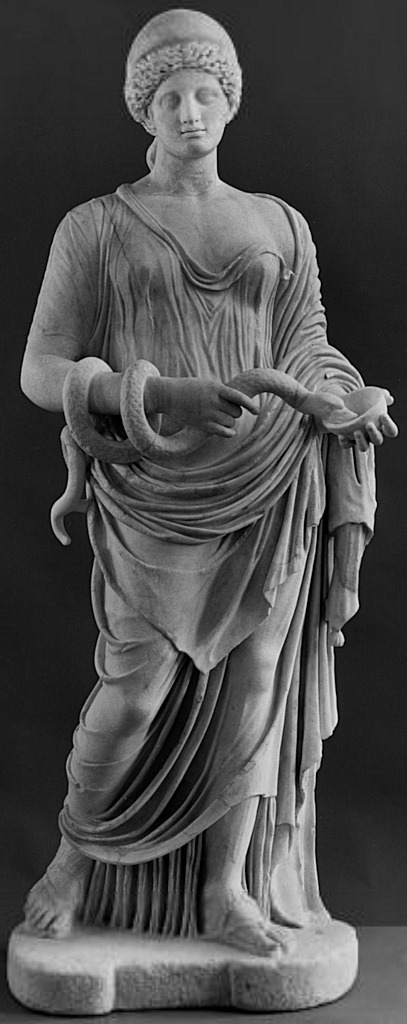#hygieia
Text
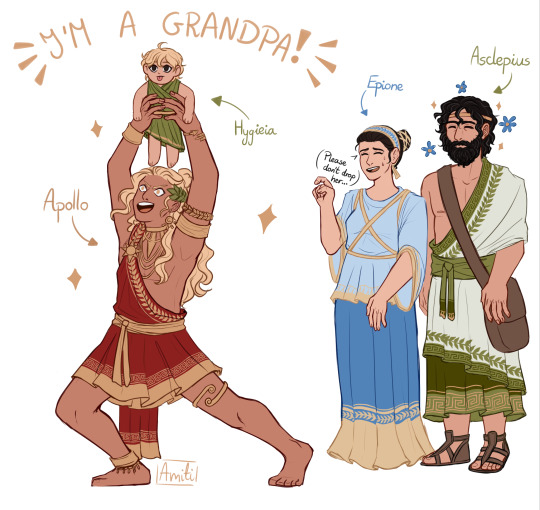
Dadpollo this, dadpollo that, but what about grandpa Apollo
#Apollo#asclepius#epione#hygieia#greek panteon#greek myths#greek gods#apollon#my art#character design#children of Apollo
2K notes
·
View notes
Text

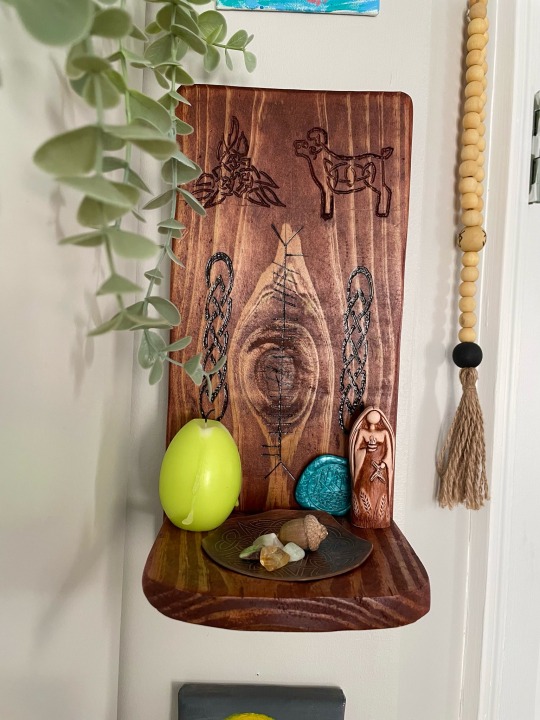


A small altar update! My best friend gifted me with these amazingly beautiful altar statues for Christmas, which was such an incredibly sweet gift 🥰 the Brigid one is going on my custom altar, and I’m thinking about putting Apollo and Artemis on my healing altar, though I haven’t decided for sure yet. I also added a representation of Hygieia to my healing altar, which I’m really pleased with!
#paganism#witchcraft#hellenism#hellenic polytheism#altar#pagan altar#apollo#artemis#apollon#apollo worship#artemis worship#diana#brigid#celtic paganism#christmas#hygieia#health#healing
84 notes
·
View notes
Text

Cleopatra (Hygieia), ca. 1615
By Peter Paul Rubens
#art#painting#fine art#classical art#flemish art#17th century art#17th century painting#oil painting#old paintings#hygieia#beauty#european art#western art#women#flemish painter#belgian art#belgian painter
53 notes
·
View notes
Text
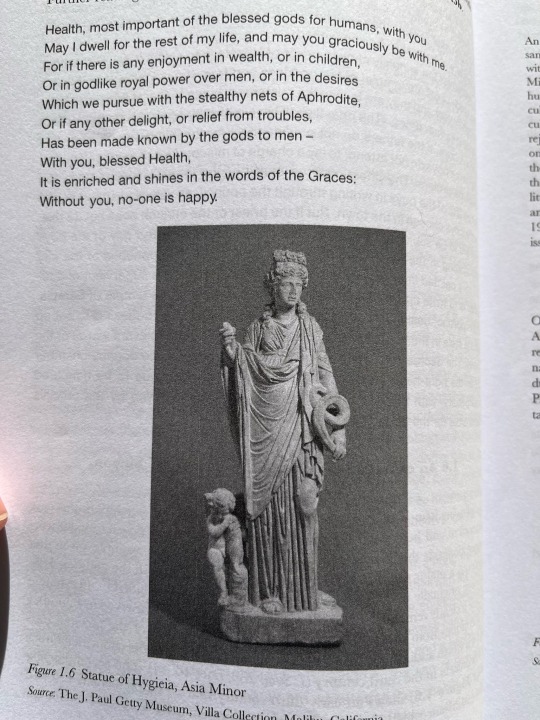
Hymn to Hygieia from “Pagans and Christians in Late Antiquity: A Sourcebook”
53 notes
·
View notes
Text


The Asclepieion of Pergamon, Turkey.
2024 © Moon and Serpent
17 notes
·
View notes
Text




"Medicine" : Gustav Klimt : 1907 - Also referred to as "Hygieia". Hygieia is a goddess of health cleanliness and hygiene. Her name is the source for the word "hygiene".
In 1893 Gustav Klimt was commissioned to decorate the University of Vienna with The Triumph of Light over Darkness, a series of paintings representing the university's faculties; Philosophy, Medicine & Jurisprudence. Medicine was presented in 1901, scandalously focusing on the powerlessness of the art of healing and ignoring achievements in prevention and cure, at a time when Vienna was leading the world in medicine. The staff was upset & none of the paintings were fixed to the ceiling of the university's great hall. In 1943 they were moved for protection to a castle, which was destroyed. All that remains from Medicine are drafts and photographs (above).
These days if you prefer, you can have your medicine in & on a champagne flute (below)

FYI - One notable reference regarding Hygieia's role as a goddess of health can be found within the Hippocratic Oath. The oath taken by physicians in order to swear before various healing gods, one of them being Hygieia, that they will follow a code of established ethical standards while practicing medicine.
Section of the translated oath from Greek to English:
"I swear by Apollo the Healer, by Asclepius, by Hygieia, by Panacea, and by all the gods and goddesses, making them my witnesses, that I will carry out, according to my ability and judgment, this oath and this indenture."
#art#gustav klimt#klimt#medicine#ai#restoration#recreation#colorization#hygieia#hippocratic oath#greek mythology#roman mythology#university of vienna#art nouveau#cliff clavin
50 notes
·
View notes
Photo

The Daughters of Asclepius
#trauma center manga#trauma team#iaso#aegle#Hygieia#panacea#aceso#atlus#aileen rose#yellow rose productions
26 notes
·
View notes
Text

The Hygieia Fountain (1896) in the inner courtyard of the Hamburger Rathaus in Hamburg, Germany, features a bronze statue of Hygieia, the ancient Greek goddess of health and hygiene.
6 notes
·
View notes
Text

Louis Hector Leroux - Invocation to the Goddess Hygieia, 1862.
16 notes
·
View notes
Text
Bay Rum is like the epitome of cleaniliness to me. I want to stock up. Everything good in life has a feminine energy attached to it, I am thankful to Lady Hygeia for Hygiene🛁🧽🧼

4 notes
·
View notes
Text
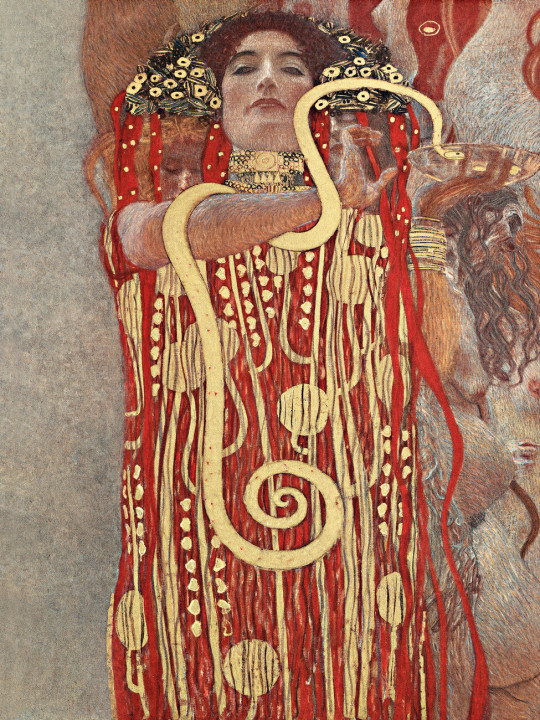
Description of the artwork «Hygieia. A fragment of the painting "Medicine" (the ceiling Paintings for Vienna University)»
In 1894, Gustav Klimt was an extremely popular artist in Vienna. His colleagues dreamt of the glory that surrounded him. He had painted many successful artworks, caressed by critics, he also managed to make the design for the Burgtheater in Vienna and the Vienna Art History Museum. He was only 26 when he received the Golden Order of Merit from Emperor Franz Josef I of Austria for his contributions to murals painted in the Burgtheater. And in 1894, Gustav Klimt received another prestigious large-scale order: the art committee of the Ministry of Education commissioned him and Franz Matsch to design the ceiling paintings for the assembly hall of the University of Vienna, and approved a budget of 60,000 Guilders (today approximately 400,000 Euros).
The painter was asked to create allegorical renderings of the faculties "Medicine," Jurisprudence* and Philosophy* along with the pendentive paintings.
Allegorical ceiling painting of Law for the Jurisprudence* faculty of Vienna University that was unfortunately destroyed in 1945:
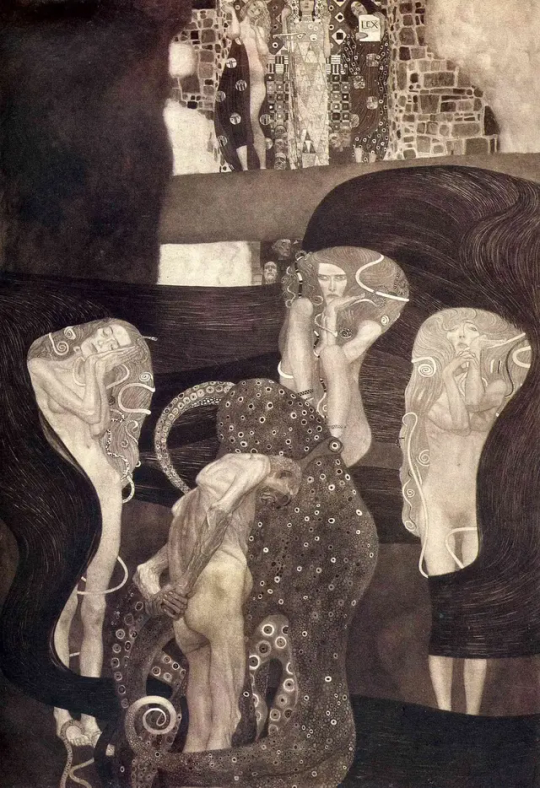
Allegorical ceiling painting for the Philosophy* faculty of Vienna University that was unfortunately destroyed in 1945:
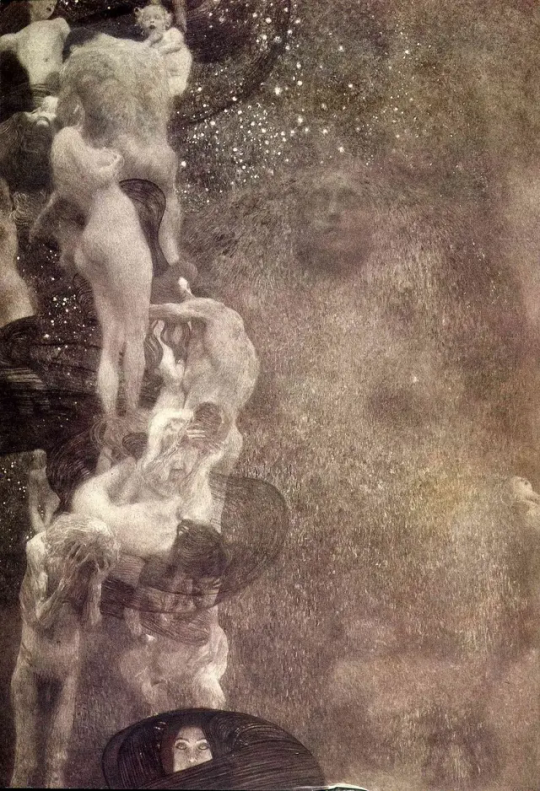
He first presented his rendering Philosophy* at the 6th Secession exhibition in 1900, followed by Medicine* at the 10th Secession exhibition in 1901. Both works met fierce criticism and sparked outrage over artist’s departure from the hitherto adhered to historic-conservative painting traditions. Klimt was asked several times to rework his motifs and even rented a second studio with higher walls in Vienna to accommodate the large-scale works. His Faculty Paintings became a political issue. In 1905, the artist refused to deliver the artworks to the Ministry of Education and, aided by his patron August Lederer, paid back his fee of 30,000 Crowns (today approximately 162,000 Euros). It was to be Gustav Klimt’s last public commission.
At first sight, Klimt's "Hygieia" seems to be put another representation of the femme fatale. "Hygieia" confronts the viewer almost scornfully, her haughtiness is implied by her upraised chin and inscrutable gaze and her posture is slightly ominous, the golden snake twines sinuously along her upraised arm and it is unclear whether she offering the bowl or withholding it. The stylization of her encompassing red and gold robe serves to hide her body and her hair is covered beneath her rich headdress, the only indication of humanity and feminine sensuality lie in her bare face and arms, and even here, her sensuality becomes a source of power, though she stares out of the painting, her eyes are hidden in shadow. It is clear that "Hygieia" is powerful and dangerous in her own right.
"Hygieia", according to Greek myth, was the goddess of hygiene, of health, cleanliness and sanitation. In fact, the snake and the bowl remain symbols of pharmacy to this day. In this context, she was not a femme fatale but belonged rather in the traditional categorization of women as caretakers. This explanation of "Hygieia" contrasts with Gustav Klimt's powerful, inscrutable and even ominous depiction of her.
At the same time, it is clear that "Hygieia" is not the only figure in this artwork, hidden amongst her elaborate headdress are the reposing faces of two women and the bare torso of a naked pregnant woman is partially hidden by "Hygieia's" red robe. Behind "Hygieia", or perhaps within her, are very human very vulnerable women whose downward gazes, flowing hair and nudity speak much more to traditional depictions of women than "Hygieia's" strange defiance and power. Is she protecting these women? Is she instead threatening such women? Are these women another side of "Hygieia," is she both vulnerable and powerful, innocent and mysterious? These questions are swallowed in the inscrutable gaze of Klimt's "Hygieia."
#gustav klimt#hygieia#medicine#philosophy#law#jurisprudence#allegorical art#allegorical painting#hygiene#vienna university#1940s#21st century art#greek mythology#femme fatale#femme fatales#dark feminine aesthetic#dark feminine energy#serpents#snakes#serpent#snake#1940#women in art#austrian artist#austrian artists#austrian art
6 notes
·
View notes
Text
Travel Altars: Hygieia
A guide to travel altars for Hygieia. Please tell me if you want a certain deity covered!
In this guide, I’m assuming you’ve added a tea-light or LED candle. It isn’t necessary, but it’s not going to be included in any of these guides. I’m also going to be assuming you’ve added a photo of the deity and prayers. These guides will not include those, either.
Salt
Vial of Khernips
Wet Wipes
Alcohol Wipes
Bay Leaves
Gauze
Snake Figurines
Pumpkin Seeds
See more deities here.
@aphroditeadorer
#hygieia#hygeia#hygieia deity#hygeia deity#hellenism#hellenic#helpol#deities#hellenic polytheism#hellenic community#hellenic pagan#hellenic polytheist#hellenic deities
13 notes
·
View notes
Text
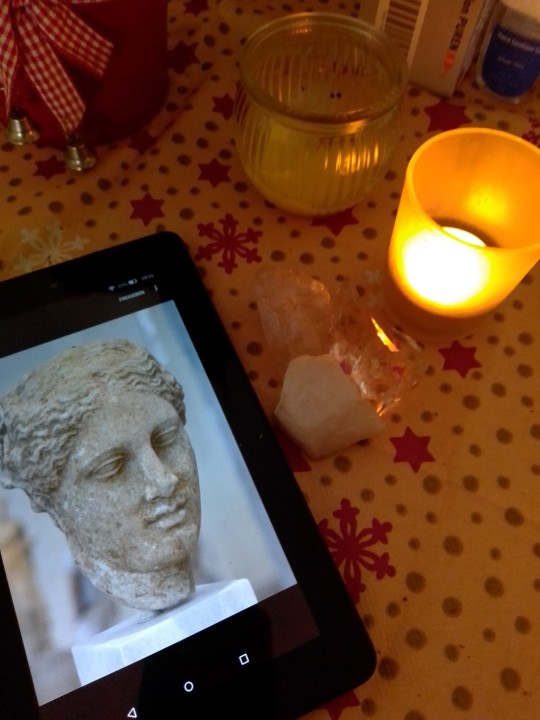
it became quite a ritual over the past days to light a candle and offer something to hygieia. next week i'm gonna work on my little altar. havent smoked a cig since i asked hygieia for help, i 'm so thankful.
6 notes
·
View notes
Text


HYGIEIA in Saal X:
"Kopf Der Hygieia" + Room 10 view
Head - 2 AD Roman copy of a Greek original of the 4th c. BC
[Hygieia: https://en.wikipedia.org/wiki/Hygieia ]
KunstHistorisches Museum, Vienna | KHMV
["Ancient Greece and Rome", Saal X]
• Web : https://www.khm.at/en
• FB : https://www.facebook.com/KHMWien
• IG : @kunsthistorischesmuseumvienna
KHMV | Michael Svetbird phs©msp | 08|23 6200X4100 600 [I., II.]
The photographed objects are collection items of KHMV, photos are subject to copyrights.
[non commercial use | sorry for the watermarks]
📸 Part of the "HEADS.Sculpture" MSP Online Photo-gallery:
👉 D-ART:
https://www.deviantart.com/svetbird1234/gallery/78520831/heads-sculpture
👉 FB Album:
https://www.facebook.com/media/set?set=a.1400262423675664&type=3
.
#vienna#kunsthistorisches museum wien#kunsthistorisches museum#history museum#archaeological museum#sculpture#roman#ancient art#ancient sculpture#antiquity#ancient#archaeology#archeologia#museology#mythology#greek mythology#art history#antiquities#museum#hygieia#υγιεία#goddess#head#photo gallery#art photography#archaeology photography#sculpture photography#museum photography#michaelsvetbird#heads
4 notes
·
View notes
Text

Lower part of a marble seated statue of Hygieia. Roman 1st or 2nd century CE. x
Copy or adaptation of a Greek work of the 3rd or 2nd century B.C.
Hygieia, the personification of Health, was the daughter of Asklepios, the god of healing. Snakes were closely associated with both figures and were actually kept in many of the sanctuaries where the sick gathered. This Hygieia was shown feeding a gigantic serpent.
14 notes
·
View notes
